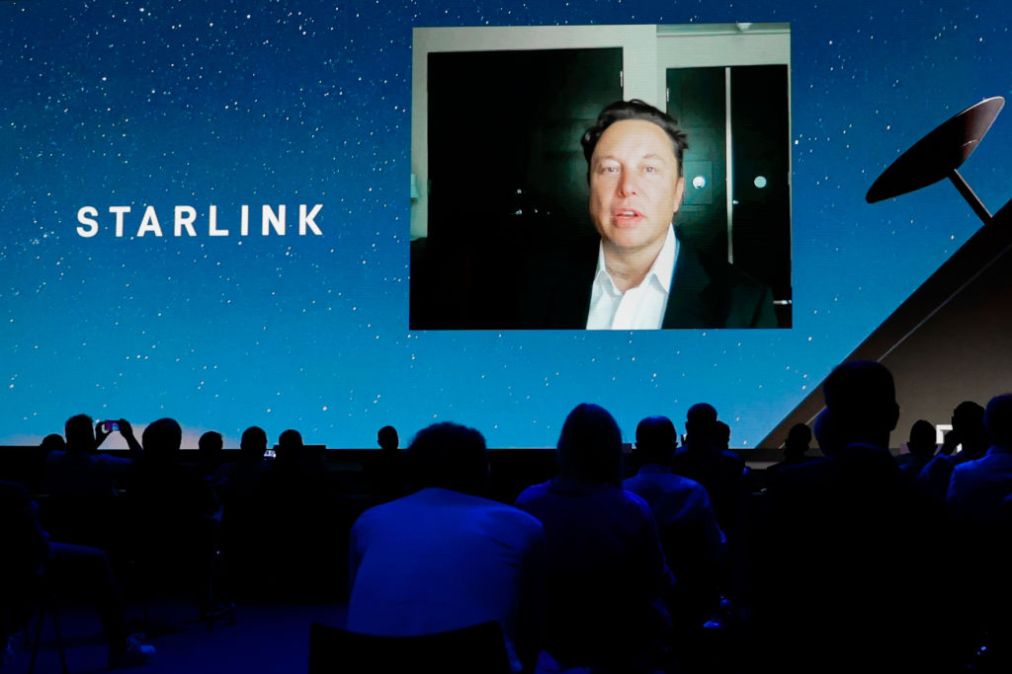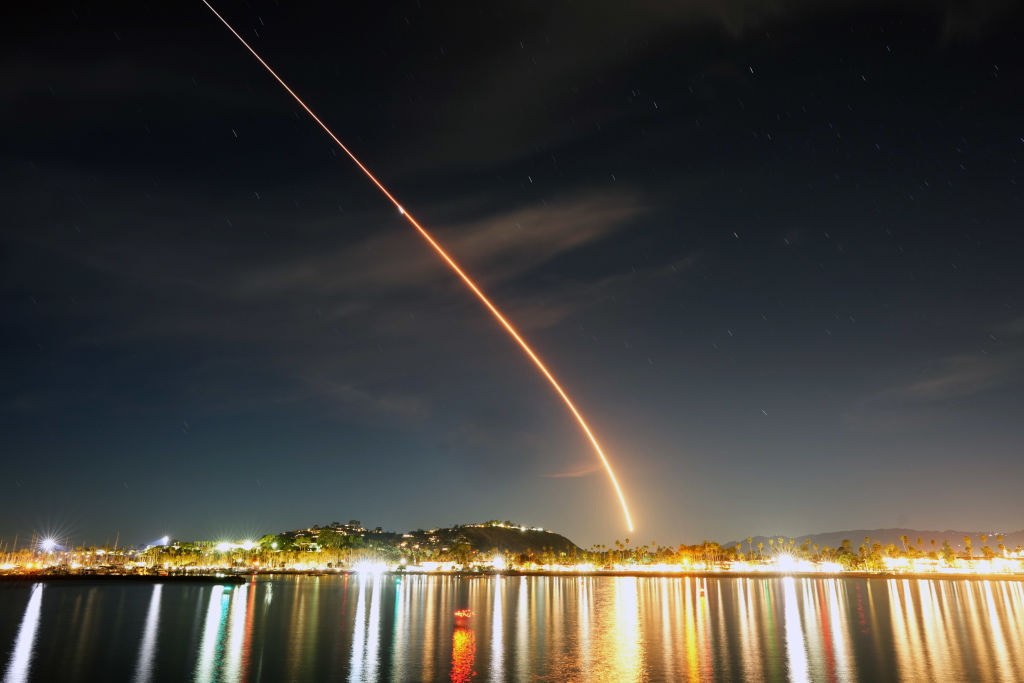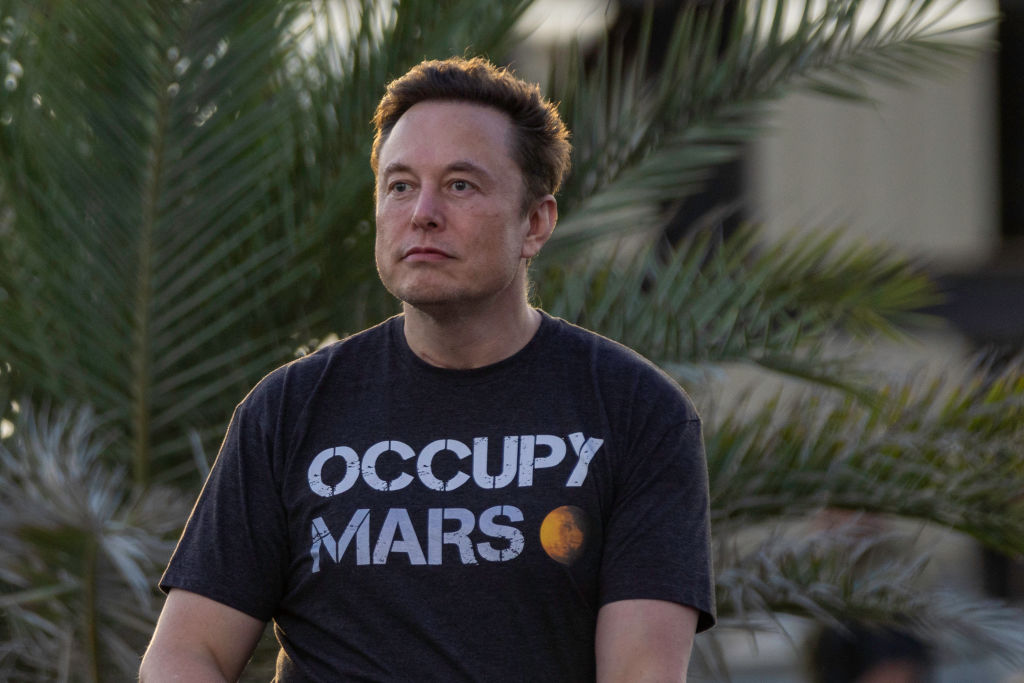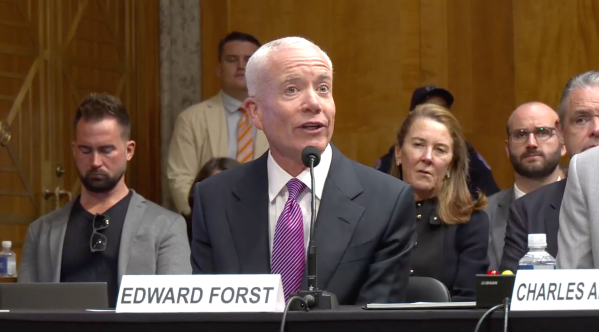As Trump and Elon feud, government demand for Starlink grows

Along Alaska’s rugged coastline — where the distance between ports can span dozens of miles and vast uninhabited wilderness — residents and crew aboard the state’s ferry system can connect quickly to the internet for crucial information via Starlink terminals installed on the ships.
In Antarctica, National Science Foundation research centers use the service to stay connected, as does Customs and Border Protection, which also deploys the SpaceX-owned satellite internet constellation in several remote locations to receive real-time data.
A “Starlink Guest” WiFi pop-up has even been spotted at 1600 Pennsylvania Ave., the Washington Post reported earlier this year, possibly connected to a terminal for the internet installed on an executive complex roof.
These are just some of the ways the U.S. government, at all levels, is now using Starlink — despite the ongoing feud between SpaceX founder and CEO Elon Musk and President Donald Trump.
Starlink can be easier to implement than fiber and fixed wireless, which in some cases require extensive and expensive construction. The service can be beneficial, particularly in remote places or during emergencies, when ground-based telecoms are damaged. Some 911 operators are turning to Starlink as a backup communications network, and SpaceX said in a tweet earlier this month that it was providing minikits to search-and-rescue teams operating in dead zones following devastating flooding in Texas. It’s not the first time the company has provided free service during an emergency.
Still, SpaceX’s critics warn that increasing government use of Starlink comes with challenges, including potential speed throttles, customer service issues, and inconsistent connection. Some details about the Starlink network, and the operation of SpaceX — a private company that appears heavily influenced by Musk’s personal interests — remain unclear. The world’s richest man has indicated repeatedly that Starlink is how he hopes to fund his plans to colonize Mars, meaning a service used for government work, some warn, risks being tied up with the company’s still far-out aspirations for space.
“If you snapped your fingers and SpaceX was gone, I feel like it would be really bad — on net — for wildfires and fighting wildfires and dealing with disasters and internet access on boats in the ocean and things like that,” said Christopher Mitchell, the director of community broadband networks at the Institute for Local Self-Reliance. “Here we are dealing with this loony guy who happens to be in control of the first constellation that can deliver this service [and] does it quite well.”
Sascha Meinrath, a Penn State telecommunications professor studying the SpaceX network, said lawmakers and procurement officers often “don’t understand what they’re purchasing because we don’t have disclosure of the actual capabilities of Starlink. …The danger is when people unknowingly purchase these services, place them into mission-critical functions, and then the detrimental aspects of these networks not living up to the hype.”
Prior to his public tiff with Trump at the beginning of June, Musk at the end of May completed his term of about 130 days as a “special government employee,” heading up the controversial Department of Government Efficiency and serving as an adviser to Trump and his administration. During that time, some questioned if Musk was using that position to boost his company’s work with government entities.
A FedScoop review of multiple federal agencies and outreach to all 50 states reveals an increasing nationwide reliance on Starlink, raising questions about the U.S. government’s dependence on SpaceX and its mercurial founder.
How Starlink gets to government
There isn’t a single path for agencies to access Starlink. On its website, SpaceX recommends that government purchasers buy one of two business service plans: a local priority service meant for use in a single area, or global priority, for maritime and international use. The company also offers regular consumer residential and roaming plans. Starlink sells hardware for seafaring and aviation contexts, too.
Government agencies can buy the service in at least three ways, including through the Starlink store, via the General Services Administration’s Multiple Award Schedule contract, or by going through a handful of authorized resellers.
When users connect through a Starlink terminal, they’re linked to a satellite constellation — a network of thousands of satellites in low-Earth orbit that service traffic from Starlink customers all over the world. A Starlink federal government price list states that Starlink user terminals can be installed and deployed with “absolutely no professional experience or formal training required” and that “no onsite installation, configuration, or activation support is necessary from SpaceX.”
SpaceX did not respond to a request for comment and a series of questions on its approach to public sector sales, but government sales positions listed on its jobs board indicate that, along with direct sales to government and GSA’s schedule contract, it’s interested in working with several categories of federal contractors, including value-added resellers and system integrators.
(The company separates its defense satellite communications into a separate service, called Starshield, and its terms of service forbid the use of Starlink for military end users.)
Sometimes, the payment details between a government, or governments, and SpaceX for Starlink services can be murky, as was the case with the U.S. Agency for International Development’s work in Ukraine. Musk also appears to have donated Starlink service to the White House, though not without security warnings.
Most agencies are not buying the technology directly through SpaceX, but through resellers, which act as intermediaries in federal government tech procurement and provide support for those services.
The National Science Foundation reached out to both Starlink and its authorized resellers to request information about time-sensitive installation in Antarctica. Lisa Vonder Haar, chief of staff at NSF’s inspector general office, told FedScoop that after a typical procurement process, the agency went with MetTel to deliver the technology. Natural disaster researchers working with the agency’s Natural Hazards Reconnaissance facility have also used Starlink on deployments to remote locations.
Resellers appear because major technology manufacturers typically don’t have their own contracts with the federal government, one official at the Transportation Department told FedScoop. Along with being better informed about procurement rules and how to package certain technologies, resellers can also help agencies meet requirements on the diversity of government suppliers, the person said, and bypass requirements for competitive bidding. There can also be contracts for implementation and maintenance, the person noted.

Resellers emphasize their customer service, including the installation of hardware in some cases. But another key benefit is the ability to directly communicate with SpaceX in a way regular customers can’t. Resellers appear to allow SpaceX to offload inquiries about Starlink support to another company for troubleshooting. MetTel, for instance, has a 24/7 live help desk for customers to troubleshoot, and Don Parente, the company’s vice president of public sector sales and solution architecture, said they have “reach into Starlink [and] other additional resources” that the average person doesn’t.
Another benefit is access to backup hardware. Chris Cropley, director of the Tidal Network, an Alaska-based broadband service program authorized to sell Starlink to federal agencies, points out that his organization has access to a Starlink angel account, which allows an entity to buy around 50 terminals a year with the same service, at the same price, and on a single dashboard.
Tidal also has a separate agreement with SpaceX that allows the network to use it for backhaul. “We have a great relationship with SpaceX. I could call them right now and get them on the phone if we needed to,” Cropley told FedScoop. “The value that we provide them is that we aren’t asking them. You tell us something, once — we understand something once — and we can reiterate that out to the larger community.”
How federal agencies are using Starlink
With the help of these resellers, Starlink is now being used by many major federal agencies, including on high-stakes missions. Specifically, several components in the Department of Homeland Security are now using Musk’s service, according to federal spending records.
The Federal Emergency Management Agency has bought Starlink services — but also fell into the crosshairs of Musk. In the aftermath of Hurricane Helene in 2024, Musk said FEMA was blocking deliveries of the terminals, a claim the agency called false. FEMA did not respond to repeated requests for comment on its use of Starlink.
Customs and Border Protection, meanwhile, is using Starlink to support video and “positional location information,” a spokesperson said, part of a proof-of-concept deployment that the Border Patrol plans to replace with a permanent mesh network solution.
When Starlink first became available, CBP used “existing contracts” to access the service and then incorporated these into the GSA Enterprise Information Solutions contract, a spokesperson for the DHS component said. If and when CBP encounters issues, the agency goes through the vendor it purchases Starlink from, which then works with the satellite provider directly. The agency sees Starlink as part of its “overall network portfolio.”
”Obtaining and utilizing the most advanced technology will put CBP in a better position to address threats at the border and beyond, while better facilitating legitimate travelers and cargo,” a CBP spokesperson told FedScoop. Starlink, they said, is among the technologies in use that “allow CBP officers and agents to communicate and receive real-time data in the most remote locations of the country while keeping them safe.”
Federal spending records show that the State Department appears to have bought services related to Starlink from a range of third-party companies for its work abroad — including in countries such as Fiji, Burundi, Haiti, South Africa, South Sudan, and Turkmenistan — though the agency has also bought the service directly from the company.
The State Department has actively pushed for policies that would encourage the approval and adoption of the service abroad, ProPublica recently reported. Also, at the U.S. Embassy in Dhaka, Bangladesh, federal officials are soliciting grant applications for programs that showcase American innovations, naming Starlink as an example.
A spokesperson for the State Department did not comment on its procurement strategy, but provided this statement: “Starlink is an America-made product that has been a game changer in helping remote areas around the world gain internet connectivity” and “any patriotic American should want to see an American company’s success on the global stage, especially over compromised Chinese competitors.”

The National Oceanic and Atmospheric Administration — which falls under the Commerce Department and uses satellites for earth monitoring — has engaged SpaceX and reseller MetTel about using Starlink on ships, federal records show. The FBI and Drug Enforcement Agency have also purchased Starlink technology in the past and recently posted new requests for information for the technology. At the Transportation Department, components appear to have purchased Starlink from resellers and directly from the company.
One of the most newsworthy use cases of late, at the Federal Aviation Administration, isn’t happening directly through the company. A public records officer told FedScoop earlier this year that the agency has no active agreements with SpaceX. An April letter to Sen. Ed Markey, D-Mass., signed by then-acting FAA Administrator Christopher Rochelau and obtained by FedScoop, said the same.
Instead, the agency told FedScoop that it’s researching Starlink at some non-safety critical sites in Alaska to provide support for pilot weather information and flight services, as well as evaluating it along with other technologies at FAA facilities in Oklahoma and New Jersey through a separate contract with L3Harris, a defense and government contractor.
The Bureau of Land Management is now working with a communications vendor that uses Starlink capabilities to support communications during wildland fires, said Marshall Thompson, a deputy division chief focused on external affairs at the National Interagency Fire Center. These kits were funded by former President Joe Biden’s bipartisan infrastructure legislation, but future support will need to take place through an agency contract, Thompson said. Some local fire stations participating in SafeNet — a communications platform for wildland fire operations —sometimes have both satellite and hardwired internet service, since both can be unreliable.
NASA, which has myriad contracts with SpaceX, is using Starlink “for a small number of unique scenarios, with additional secure authentication required to access NASA systems and data,” a spokesperson for the agency told FedScoop. The person added that requests for network service like this are evaluated on a “case-by-case basis for security and logistics.”
Additionally, SpaceX is one of several companies that NASA has hired to help build a commercial satellite network for space operations around Earth.
States are using Starlink, too
Of the 23 state IT offices that responded to FedScoop, almost all said they had in some capacity engaged with a provider of Starlink’s services — either through their states’ broadband offices, or directly to scope out the technology for specific, government use cases.
That number could soon grow: many states are interested in using the Broadband Equity, Access, and Deployment program to purchase satellite internet services like Starlink. Recent changes to BEAD program guidance mean billions in federal funding could soon be available to Starlink. Several states have already pre-approved their BEAD funding to be spent on satellite internet service.
There are questions about this approach: Since individuals can purchase Starlink independently, it’s odd that government dollars could subsidize something that is already commercially available, said Mitchell, from the Institute for Local Self-Reliance. Right now, he added, it’s unclear if the BEAD monies will go toward purchasing or providing subsidies for individual terminals for residences, or directly to SpaceX for usage of the satellite constellation.
Adding to the confusion, Mitchell said, is that individuals in some locations may receive Starlink’s service, while their neighbors a mile away might be getting service through a fiber network.
Beyond BEAD, some states are already spending heavily on Starlink services. One of the largest efforts is in Maine, which last year spent $5.4 million on the installation of 9,000 free Starlink terminals in locations where fiber connections would have been costly. Under the program, residents were responsible for managing and paying for their service plan. Virginia also made Starlink part of its service catalog for local government agencies and community centers last year.
Many states are turning to Starlink for emergency communications and network resiliency specifically. Michigan’s IT shop, for instance, told FedScoop it explored using the technology following an ice storm in late March that knocked out some terrestrial internet connections, while Tennessee and North Carolina’s offices told FedScoop that they turned to Starlink in the aftermath of Hurricane Helene, which caused extreme flooding after it made landfall last September.
For emergency situations, state procurement of Starlink can be straightforward. Cristalle Dickerson, interim director of strategic communications at the North Carolina Department of Information Technology, said that her office signed a three-year contract with Starlink in March following Hurricane Helene. The idea was to help state and local agencies procure low-Earth orbit services and maintain network connectivity during disruptions.
In June, before their explosive fallout, Trump said Musk “saved a lot of lives, probably hundreds of lives in North Carolina,” following Starlink’s deployment in Helene’s aftermath.

But some states’ experiences with procuring — or attempting to procure — Starlink reveal the challenges of working with SpaceX. In 2022, Louisiana’s technology office and the Governor’s Office of Homeland Security and Emergency Preparedness also explored Starlink for emergency resilience, but discovered that contacting the company could be quite difficult, according to emails obtained by FedScoop through a public records request.
One Louisiana state network director, in a set of emails from June of that year, described SpaceX as “unlike any other company we’ve worked with.” There was no way to submit a purchase order to its business service, she noted, and the only way to communicate with the company was through setting up an account and filing a service ticket.
“If not for the fact that they’re the only company who can provide low latency, high bandwidth satellite internet service, I wouldn’t bother doing business with them. But since we desperately need a solution like this in the more rural parts of our state, I’m trying to figure out how to make it work,” she said.
In an email dated Dec. 5, 2022, a now-former SpaceX employee said in an email to Veneeth Iyengar, Louisiana’s broadband director, that “government orders are manually intense for our sales team to process.” The note was in response to questions regarding a bulk purchase order of Starlink terminals for disaster recovery.
Other states that have shifted to relying on resellers to access Starlink include California. The state’s tech office told FedScoop that while it does not work directly with SpaceX or negotiate with them, state agencies can access Starlink services through third-party resellers that are approved under CALNET, the state’s official telecom procurement program.
In South Dakota, the Bureau of Information and Technology also went through a third-party reseller to provide Starlink to one site in the western part of the state. And in Texas, the state’s Department of Information Resources currently has a vendor on contract that provides bundled and packaged Starlink services as part of a service package.
Getting the jitters
Eric Bathras, the chief technology officer for infrastructure at the Maryland Department of Information Technology, said that after purchasing Starlink terminals — mostly for state parks — directly from SpaceX, his team encountered “jitters” that have made the service unreliable and far more expensive. He’s also struggled to get in touch with anyone who directly worked for the company.
That service, which provides internet connectivity and helps support emergency services, was impacted by a major change in SpaceX’s data plan model this past April. This plan allowed the company to “deprioritize” users during congested periods if they had already maxed out on their data cap. The change affected Maryland’s tiered plan, and the Starlink locations they used were eventually “throttled down.”
Jitters occur when Starlink tries to determine its best path connection to the satellite constellation, creating momentary variations in latency. The locations that had Starlink in Maryland were on the 50 gigabyte-per-month plan. Bathras said the jitters can take up about two gigabytes of data per day, effectively eating the entire month’s data plan just to operate.
“I want to talk with someone at Starlink, because I want to trust and verify, like, is this actually where it is coming from? Is this a one-off? I just need a conversation,” Bathras told FedScoop in June. “But there’s no one to talk to.”
Bathras told FedScoop in July that he had finally found a direct contact for Starlink through T-Mobile and had a meeting set up with a representative for the week of July 21.
In at least one case, SpaceX has communicated directly with government officials during an emergency, but shied away from building a more permanent relationship.
Alaska’s top tech official, Bill Smith, said that back in 2023, several areas in the remote, northwest part of the state experienced weeks-long internet and cellular outages after sea ice severed an undersea fiber-optic cable. SpaceX reached out to the state government and offered to provide Starlink, which helped restore internet connection to about 50 state offices. Repairs to the undersea fiber would have taken months, Smith said.
“It was really helpful to us. But when we got those [terminals] out there, we started engaging them to say, ‘Hey, we want to get into an enterprise agreement with Starlink to cover the entire state government,’” Smith said. “They talked with us for about a month, and then they called back and said, ‘Hey, we don’t want to get in business with state governments. Just go online and buy the dishes, that’s how we want you to do it.’”
Smith says the state has since turned to a reseller called Microcom, a local satellite internet provider. Through the reseller, Smith said, Alaska offered remote offices and agencies the ability to maintain their Starlink services, either in lieu of their previous terrestrial fiber connections or as an added layer of redundancy for emergencies.
These locations included a number of state sites and offices, including the Alaska Marine Highway system, the Department of Transportation’s ferry service. Smith said Starlink provides significantly better connectivity than the ferries had previously. Periodic towers along the waterways or geosynchronous satellite services had “bad latency” and weren’t nearly as user friendly as low-Earth orbit satellites, he said.
Some Alaska agencies declined, unable to absorb the costs associated with maintaining both, Smith said — but the true hurdle was Starlink’s lack of enterprise-grade support.
“We are procuring Starlink now through a reseller because the reseller can manage the relationship with Starlink. And then we just have that one throat to choke as the reseller and that’s helping us on our installation,” he continued. “But in terms of, ‘Hey, is there an issue with the satellite or with the equipment?’ It’s still a little bit of a tenuous support model.”
No matter which entities are ultimately involved in bringing Starlink to the government, though, there are still major questions about what, exactly, government agencies are buying, experts like Meinrath of Penn State and Mitchell of the Institute for Local Self-Reliance warn.
“SpaceX, and more specifically, Starlink, is a black box in which there are claims that are made about how the system performs, and it’s not clear that we can test them,” Mitchell said.
There’s a lot we still don’t know about Starlink’s support, its business model, and the ultimate viability of SpaceX, the two experts added. Another concern is that it’s unclear how the government should interpret Musk’s boasts about the reliability — and security — of Starlink, Mitchell said, especially given his penchant for making erratic claims.
Regardless of what isn’t known about Starlink, it’s clear the government’s reliance on the technology is growing.






